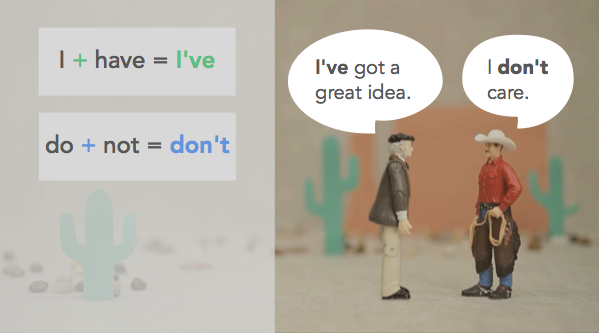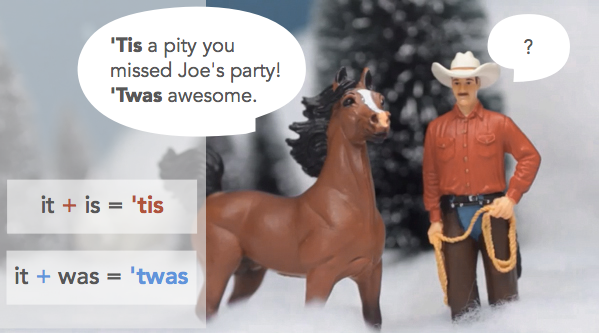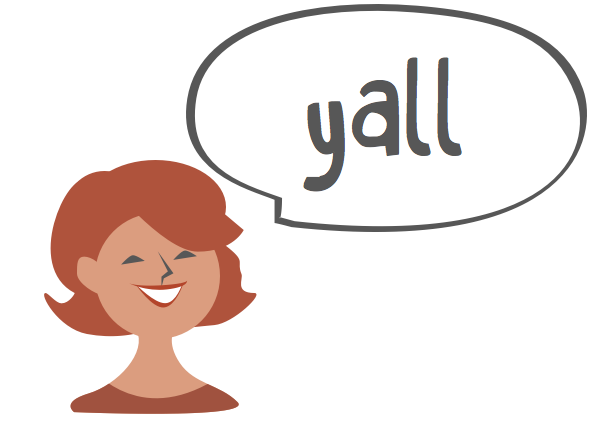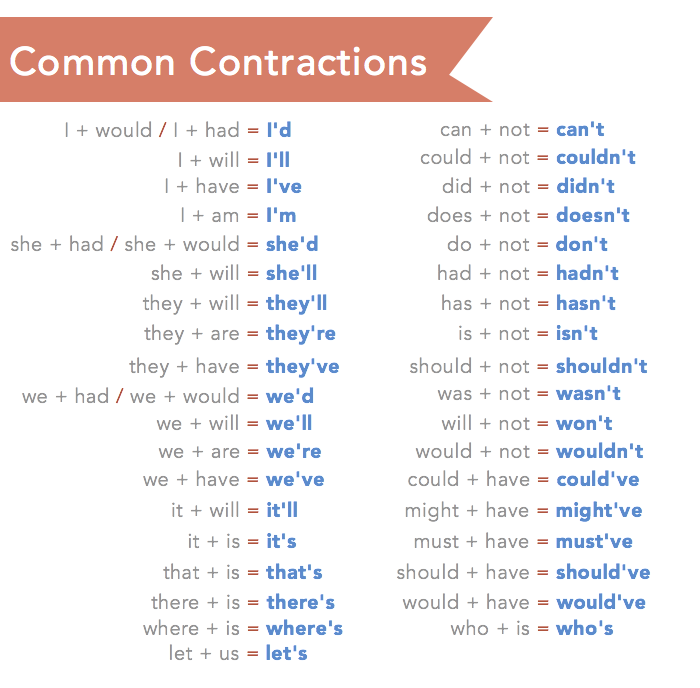

A contraction is a word made by shortening and combining two words. Words like can't (can + not), don't (do + not), and I've (I + have) are all contractions.

People use contractions in both speaking and writing. They're so common that movies and books often try to make characters seem old-fashioned or strange by having them never use contractions. This is a little silly because English speakers have been using contractions for centuries—although not always the same ones we use today.

All contractions include a punctuation mark that looks like this:

This is an apostrophe. Knowing where to put the apostrophe can seem tricky, but there's a pretty simple rule that works with every contraction. Remember how we said contractions are made of two words that have been shortened? The apostrophe replaces any letters that are in the original words, but that aren't in the contraction.
For instance, the contraction couldn't means could not. As you can see, the o in not isn't in the word couldn't. The apostrophe goes in its place, right between the n and t.

Let's look at another example. You'll means you will. This contraction is missing two letters from the word will: w and i. The apostrophe goes where these missing letters belong: between the u and the first l.

In some parts of the United States, you can address a group of people by using a special contraction for you + all. It's written below—without the apostrophe. Click the spot where the apostrophe should be.

Putting the apostrophe here just doesn't work. The apostrophe always takes the place of missing letters in a contraction. There aren't any missing letters in the word all.
Remember, this contraction means you + all, or youall. Which letters are missing? The apostrophe should go in the space where the missing letters belong.
Y'all is a contraction of you all . The missing letters are ou , so the apostrophe goes in their place — right after the y .
In English, there are a fairly small number of contractions, and they're all made out of common words. Here are some of the contractions you'll see the most:

You might have noticed that the word won't is a little different from the other contractions. It means will not, even though the word will isn't there. This is because won't is based on a much older form of the word will. Even though the word changed, the contraction stayed the same!
If anyone tells you that you should never use contractions in writing, they're wrong. It's perfectly OK to use contractions in most writing, including newspapers, fiction, and instructions. In fact, using contractions can make your writing simpler and easier to read.
However, if you're writing an academic paper or anything else that's formal, you may want to avoid contractions. If you're writing for school, it might be a good idea to ask your teacher if contractions are OK.